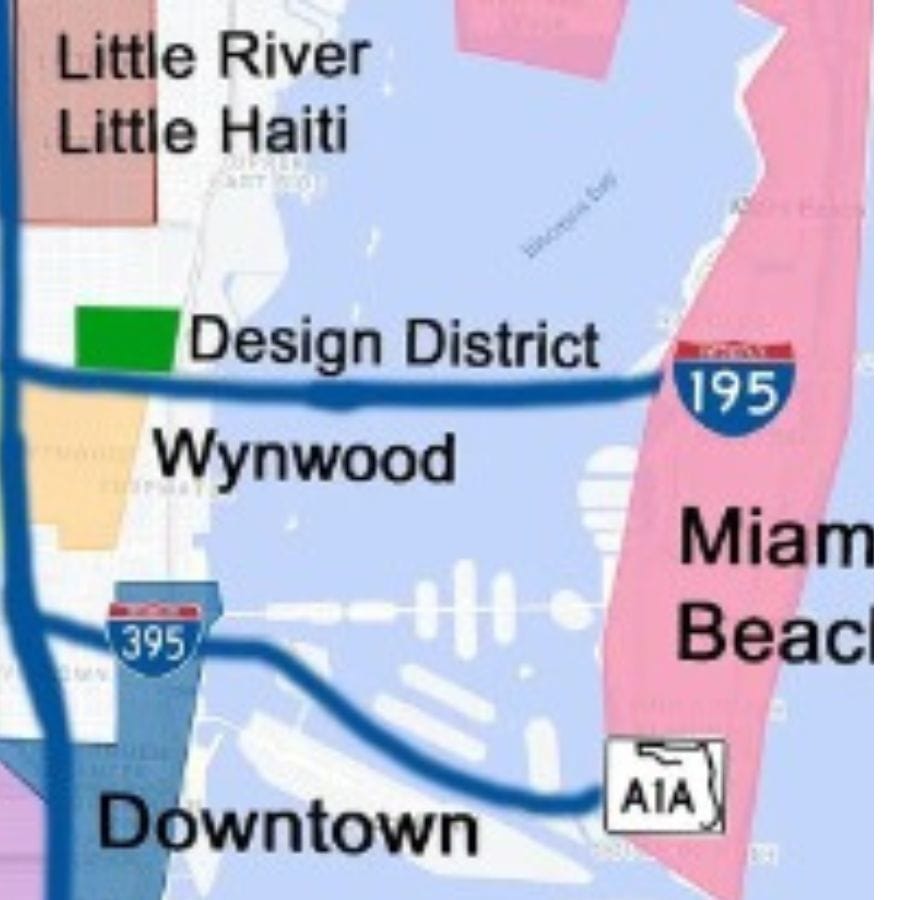THE DIESEL WYNWOOD, with units ranging in price from $479,000 to $5,995,000, is in what was a working-class area called Little San Juan. Investors expect the gentrification to move north to Little Haiti, where the typical household income is $45,582.
Part 8 of 10
Climate change is already impacting how cities from Miami to Phoenix can, or cannot, grow. The impact of climate change has some planners believing that this could lead to more growth in rustbelt cities like Gary.
In Florida, flood insurance costs are already soaring after the Federal Emergency Management Agency (FEMA) changed the way it calculates flood insurance prices. In the most expensive ZIP code for flood insurance in South Florida, 33149, which covers Key Biscayne, the average premiums will rise above $7,000 a year reports WUSF.
With a cap placed by Congress that limit flood insurance premium increases to 18 percent per year for current homeowners, many Floridians expect yearly increases for many years until their premiums reach market rates. Since April 2022, new flood insurance buyers were not covered by the limits and are paying market rates immediately.
Florida Rising, a Florida affordable housing advocate warns that climate change is now another factor forcing lower income people from their homes in Miami’s underinvested neighborhoods of Little Haiti, Allapattah, and Liberty City. According to Dr. Harold Wanless, a Geologist and Professor of Geography and Sustainable Development at University of Miami research, by the year 2060, nearly 60% of Miami-Dade county will be underwater.

“Miami’s redlined districts are now a haven for climate gentrifiers with developers in Miami turning away from beachfront properties and heading for higher ground and further inland,” they report. Formerly, underinvested areas such as Little Haiti are beginning to experience the building of luxury high-rises, driving up prices and pushing out long-time residents.
In 2016, Zillow predicted that one out of eight homes in Florida would be underwater by 2100, a loss of $413 billion in property.
In Arizona, new housing developments are no longer getting grant certifications within Metro Phoenix as groundwater supplies rapidly disappear. “This impact of climate change will prevent housing supply from catching up with demand,” said Zillow Senior Economist Orphe Divounguy in AZBigMedia.
Climate change and population growth have increased pressure on the Colorado River, forcing Southwestern states to look for other sources of water. The Colorado River flows for approximately 1,450 miles and provides water to seven states: Colorado, New Mexico, Utah, Wyoming, Arizona, California, and Nevada.
In 2021, Nevada is the first state in the U.S. to ban ornamental grass. The ban affects residents in southern Nevada, does not apply to homes and parks, and begins in 2027. Officials estimate the region can save about 14 gallons of water per person per day by ripping out the ornamental grass.
In California, Allstate joined State Farm this year in deciding to halt sales of property and casualty coverage to new customers in The Golden State saying it’s too pricey to underwrite policies in the state which has seen thousands of natural disasters in recent years.
RUST BELT CITIES PREPARE CLIMATE MIGRANTS
Tulane University associate professor of real estate Jesse Keenan thinks that frigid cities may eventually prove an appealing relocation destination for many Americans as climate change brings increasingly unbearable heat to already warm parts of the United States. “If you’re Florida … [the predictions] should be quite unnerving,” the expert in climate adaptation and design said in a telephone interview with the Thomson Reuters Foundation.
When Duluth’s mayor, Emily Larson, first heard of Keenan’s proposition that her city of 86,000 could be one of the best choices for climate migrants, her reaction was “astonishment,” she said. From 2010 to 2016, the city added only 56 people.
But Keenan sees some northern Rust Belt cities – which stretch from the Midwest to parts of the Northeast – as natural destinations in a hotter world to come. Cities like Duluth, Buffalo and Gary lost jobs and population starting in the 1950s as industries moved overseas, but still have more buildings and infrastructure than they can use. Duluth, for instance, was planned for a population of 120,000 people.
It, like Duluth, nestles along the Great Lakes, which contain 20 percent of the world’s surface freshwater, a significant attraction in a potentially hotter world.
Keenan provided CNBC with a list of potential climate havens, most of which are located in the East and Midwest.
Keenan’s list is as follows:
1. Asheville, North Carolina
2. Buffalo, New York
3. Burlington, Vermont
4. Detroit, Michigan
5. Duluth, Minnesota
6. Madison, Wisconsin
7. Milwaukee, Wisconsin
8. Minneapolis, Minnesota
9. Pittsburgh, Pennsylvania
10. Rochester, New York
The Great Lakes region is considered especially attractive because it is spared both the storms of the East Coast and the wildfires of the West, and has no shortage of fresh water, Grist magazine pointed out. Additionally, the lakes help moderate temperature extremes and global warming means that the region’s infamous winters are getting less bitter.
Next: Cast Down Your Bucket Where You Are: Renovating IN Gary, IN – Find the Property.
Gary native Wayne Young is the publisher of Port of Harlem magazine. Founded by Young in 1995, the magazine is inclusive, diverse, and Pan-African. He is also president of the Port of Harlem Gambian Education Partnership, which funds and manages small projects centering around culture, education, and community in the West African nation. He recently repurposed his parents’ home in Gary into a short-term rental.
Wayne A. Young
Gary native Wayne Young is the publisher of Port of Harlem magazine. Founded by Young in 1995, the magazine is inclusive, diverse, and Pan-African. He is also president of the Port of Harlem Gambian Education Partnership, which funds and manages small projects centering around culture, education, and community in the West African nation. He recently repurposed his parents’ home in Gary into a short-term rental.
-
Wayne A. Young#molongui-disabled-link
-
Wayne A. Young#molongui-disabled-link
-
Wayne A. Young#molongui-disabled-link
-
Wayne A. Young#molongui-disabled-link






